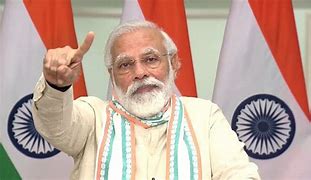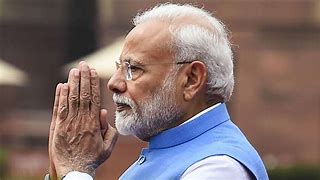Feature
Queen Elizabeth in line for pay rise
 London:Britain’s Queen Elizabeth is set to receive a $72,000 a week pay rise, an official report revealed.
London:Britain’s Queen Elizabeth is set to receive a $72,000 a week pay rise, an official report revealed.
The Queen’s income is based on a percentage of money earned by the Crown Estate, one of the wealthiest real estate owners in Britain, Xinhua news agency reported.
In its annual report issued on Tuesday, the Crown Estate disclosed that it has delivered a record $405 million to the Treasury in the past year.
Unless the current formula is altered, it will mean that in 2017 the Queen’s pay packet will be almost $61 million, 6.5 per cent higher than the %57 million she is receiving this year, and representing a 57 per cent increase over what was paid in 2012.
The sum is worked out by paying to the Queen 15 per cent of the surplus made by the Royal Estate, paid two years in arrears.
The figure can only be changed by three royal trustees, the Prime Minister, Chancellor of the Exchequer and Alan Reid, who has the title of the Queen’s Keeper of the Privy Purse.
The three are currently in the process of a review which could affect the amount due to the monarch next year, a government official said.
A spokesman at Buckingham Palace said that it was too early to speculate on what the result would be or what amount the Queen would receive for 2017-18.
The report also showed the monarchy cost British taxpayers $53.5 million in 2015-16, with more than $21 million spent on the upkeep of royal households such as Buckingham Palace and Windsor Castle, as well as other royal households and buildings.
The 90-year-old Queen and the royal family’s official travel cost the taxpayer $5.4 million in the past year, a reduction of more than $1 million compared to 2015.
The Crown Estate owns London’s Regent Street as well as the entire seabed around Great Britain. It also owns Windsor Great Park, and Ascot’s famous racecourse, as well as estates and properties in Scotland and Northern Ireland, and across England.
The office of the Crown Estate was started in 1760 when it was agreed that surplus revenue from the crown’s estate would go to the Government Treasury. In return reigning monarchs receive an annual payment, 15 per cent of the annual surplus of the estate to support official royal duties.
Entertainment
Meghalaya Reserves Legalized Gambling and Sports Betting for Tourists

The State Scores Extra High on Gaming-Friendly Industry Index
Meghalaya scored 92.85 out of 100 possible points in a Gaming Industry Index and proved to be India’s most gaming-friendly state following its recent profound legislation changes over the field allowing land-based and online gaming, including games of chance, under a licensing regime.
The index by the UK India Business Council (UKIBC) uses a scale of 0 to 100 to measure the level of legalisation on gambling and betting achieved by a state based on the scores over a set of seven different games – lottery, horse racing, betting on sports, poker, rummy, casino and fantasy sports
Starting from February last year, Meghalaya became the third state in India’s northeast to legalise gambling and betting after Sikkim and Nagaland. After consultations with the UKIBC, the state proceeded with the adoption of the Meghalaya Regulation of Gaming Act, 2021 and the nullification of the Meghalaya Prevention of Gambling Act, 1970. Subsequently in December, the Meghalaya Regulation of Gaming Rules, 2021 were notified and came into force.
All for the Tourists
The move to legalise and license various forms of offline and online betting and gambling in Meghalaya is aimed at boosting tourism and creating jobs, and altogether raising taxation revenues for the northeastern state. At the same time, the opportunities to bet and gamble legally will be reserved only for tourists and visitors.
“We came out with a Gaming Act and subsequently framed the Regulation of Gaming Rules, 2021. The government will accordingly issue licenses to operate games of skill and chance, both online and offline,” said James P. K. Sangma, Meghalaya State Law and Taxation Minister speaking in the capital city of Shillong. “But the legalized gambling and gaming will only be for tourists and not residents of Meghalaya,” he continued.
To be allowed to play, tourists and people visiting the state for work or business purposes will have to prove their non-resident status by presenting appropriate documents, in a process similar to a bank KYC (Know Your Customer) procedure.
Meghalaya Reaches Out to a Vast Market
With 140 millions of people in India estimated to bet regularly on sports, and a total of 370 million desi bettors around prominent sporting events, as per data from one of the latest reports by Esse N Videri, Meghalaya is set to reach out and take a piece of a vast market.
Estimates on the financial value of India’s sports betting market, combined across all types of offline channels and online sports and cricket predictions and betting platforms, speak about amounts between $130 and $150 billion (roughly between ₹9.7 and ₹11.5 lakh crore).
Andhra Pradesh, Telangana and Delhi are shown to deliver the highest number of bettors and Meghalaya can count on substantial tourists flow from their betting circles. The sports betting communities of Karnataka, Maharashtra, Uttar Pradesh and Haryana are also not to be underestimated.
Among the sports, cricket is most popular, registering 68 percent of the total bet count analyzed by Esse N Videri. Football takes second position with 11 percent of the bets, followed by betting on FIFA at 7 percent and on eCricket at 5 percent. The last position in the Top 5 of popular sports for betting in India is taken by tennis with 3 percent of the bet count.
Local Citizens will Still have Their Teer Betting
Meghalaya residents will still be permitted to participate in teer betting over arrow-shooting results. Teer is a traditional method of gambling, somewhat similar to a lottery draw, and held under the rules of the Meghalaya Regulation of the Game of Arrow Shooting and the Sale of Teer Tickets Act, 2018.
Teer includes bettors wagering on the number of arrows that reach the target which is placed about 50 meters away from a team of 20 archers positioned in a semicircle.
The archers shoot volleys of arrows at the target for ten minutes, and players place their bets choosing a number between 0 and 99 trying to guess the last two digits of the number of arrows that successfully pierce the target.
If, for example, the number of hits is 256, anyone who has bet on 56 wins an amount eight times bigger than their wager.























